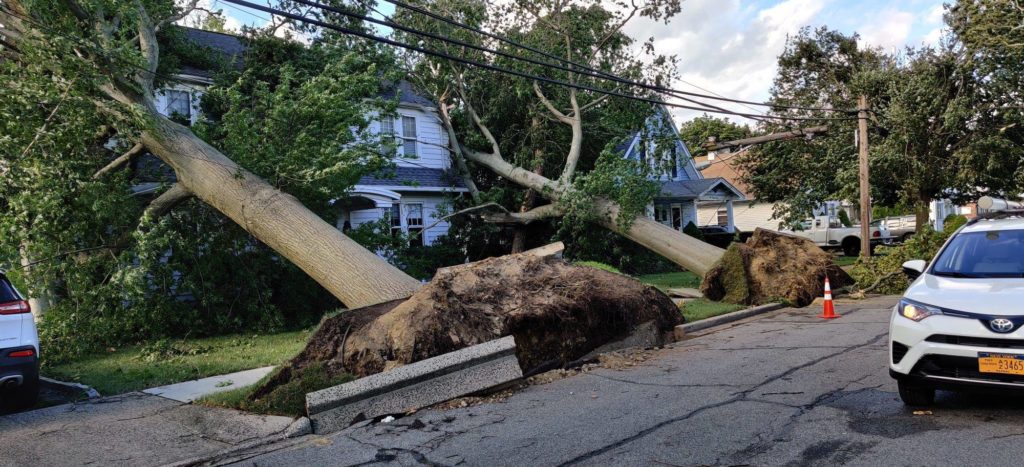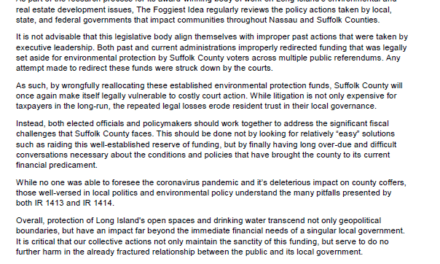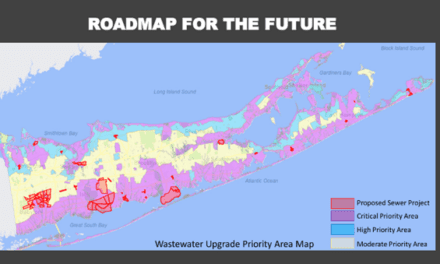The following was exclusively published by The Foggiest Idea on August 10, 2020. Interested in supporting The Foggiest Idea’s award-winning reporting and analysis? Click here.
By Richard Murdocco
Before the actual storm made so many people powerless, PSEG Long Island sent a flurry of encouraging words to its utility customers. The subject line said it all: “PSEG Long Island is ready for Isaias.” The company even boasted that “the energy grid is stronger and more resilient today because of our years of storm-hardening projects, enhanced tree maintenance and other efforts.”
The wind took that confidence away. The fast-moving tropical storm blew right across our region as it headed north, and left more than 420,000 PSEG Long Island customers without service in its wake.
Sweltering in the midsummer heat, Long Islanders could only wonder what progress—if any—has been made to harden the electrical grid since Superstorm Sandy made landfall here on Oct. 29, 2012.
Looking back, the cheery email sent right before the storm struck seems laughable. But the joke is on us. The punchline is that the millions of dollars spent to shore up the system did little to prevent the widespread chaos Isaias wrought on our region.
The question Long Islanders now face collectively is a simple one: If a mere tropical storm, with wind gusts that topped out at 80 mph, could do so much damage to Long Island, what will happen when a serious hurricane comes our way packing winds over 100 mph? And forecasters have already predicted that the 2020 Atlantic hurricane season will be “extremely active,” as the NOAA put it.
What is most discouraging this time around is that Isaias wasn’t so exceptional.
“It did what a full-fledged tropical storm would do,” Craig Allen, chief meteorologist for WCBS 880, told The Foggiest Idea, adding that “there isn’t really much of a difference between a top-level tropical storm and a category one hurricane.”
Allen explained that Isaias’ strength was amplified by its rapid movement, which hit around 40 mph as the storm system reached Albany. Forecasters had seen its trajectory coming for days, and knew to expect a wind-driven weather event for Long Island due to Isaias’ positioning and probable path.
“The northeast quadrant of the storm is the most intense for wind,” Allen said, noting that the storm’s intensity remained steady as it moved up the coastline because it was fueled by warm ocean waters. “Because of this track, you take a storm with 75 mph winds moving around 30 mph, and it winds up hitting you with that speed,” he said, drawing parallels to the historic 1938 hurricane that had a similarly rapid movement when it slammed into Long Island.
So, when the strong winds blow and the power lines snap, who’s to blame when the lights go out?
To PSEG Long Island’s credit, the utility had planned for widespread outages, anticipating that from 200,000 to 400,000 or so customers might be affected, and it had extra crews on standby. In recent years, other upgrades had been made to the grid, such as installing digital smart meters so the company could better understand where the power losses were concentrated. All told, these changes marked a long-overdue improvement from the pen-and-paper memos and dial-up modems used by Long Island Power Authority when it mishandled Hurricane Irene, as shockingly revealed by a 2011 Public Service Report on its poor response.

Pictured: The widespread failure of PSEG LI’s communications systems compounded the utility’s clean-up efforts in the days after Tropical Storm Isaias. (Photo Source – PSEG LI)
But it wasn’t just the thousands of trees that came crashing down on the power lines that gave PSEG Long Island so many problems. As the storm reached its peak, the utility’s mobile app, outage map, phone system and website all crashed, severely curtailing the users’ ability to report the outages. Making matters worse for storm-weary Long Islanders, Altice USA customers experienced widespread telephone, cable and internet failures, compounding the problem.
It didn’t take long for seething elected officials to weigh in.
In hard-hit Nassau County, County Executive Laura Curran tweeted that restoration times are “beyond unacceptable,” while New York State Senator Jim Gaughran called the response “disgraceful,” considering that Isaias was a “minor storm.” Gov. Andrew Cuomo, never one to miss the chance to slam a downstate utility, was especially forceful.
“The fact that many customers still do not know when their power will be restored makes it even more unacceptable,” Cuomo said the day after Isaias hit. “The worst of this situation was avoidable, and it cannot happen again.”
Later, in a blistering statement, the governor’s office announced that due to “the apparent lack of adequate planning by utility companies” Cuomo was ordering the Department of Public Service to launch an investigation into the responses by Verizon, PSEG Long Island, Con Edison, Central Hudson Gas & Electric, Orange and Rockland Utilities, and New York State Electric & Gas in order to determine “the causes of their failures.”
The chaos came despite the significant sums of taxpayer money that PSEG Long Island had spent on upgrading its outage management computer system and setting up logistical systems. According to Newsday, the utility allocated more than $730 million in federal disaster funds to install new equipment that would modernize its power lines and substations. But the governor was not impressed.
“We don’t pay for sunny day service,” Cuomo fumed during a press conference call two days after the storm. “We pay for everyday service.”
Craig Allen wasn’t surprised at the high level of damage Isiais caused on Long Island because the trees are full of leaves this time of year and the drought has left them weakened with shallow roots – a perfect combination for catching the wind and getting toppled over.
The veteran meteorologist also noted that too often a forecast warning about the approach of a tropical storm is just written off as “a windy rain storm” heading our way. “A strong tropical storm is almost as potent as a Category One hurricane,” Allen explained. “They may have thought they were prepared, but they really didn’t know what they were preparing for.”
Optimistically, we can expect that a state-based investigation will uncover why so many power failures happened and the utility’s communications network collapsed. But all things considered, such actions will do little to address the core issues at work.
Long Island is inherently vulnerable to hurricanes by design – geologically and politically. Occupying land extending 118 miles eastward into an increasingly warmer Atlantic Ocean, Nassau and Suffolk Counties act as a mere barrier for any storm churning up the coast to simply cross over. Worse, the majority of the region’s hastily-built—and poorly planned—leafy suburbs feature above-ground power lines and pole-mounted transformers that are easily knocked down by tumultuous weather. Unfortunately, the cost of burying those transmissions has only gone up over time, leaving policymakers with their hands tied.
So, at this point we well know the risks. Yet despite the shiny new tools the utility put to use from the lessons of past storms, Tropical Storm Isaias showed us starkly that Long Island is far from ready for the next big one. We still have a lot to learn—and time is not on our side.
Richard Murdocco is an award-winning columnist and adjunct professor in Stony Brook University’s public policy graduate program. He regularly writes and speaks about Long Island’s real estate development issues. Follow him on Twitter @thefoggiestidea. You can email Murdocco at Rich@TheFoggiestIdea.org.












